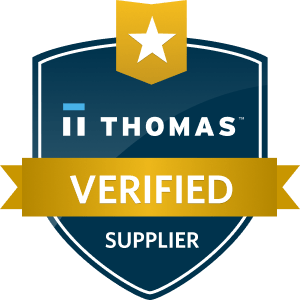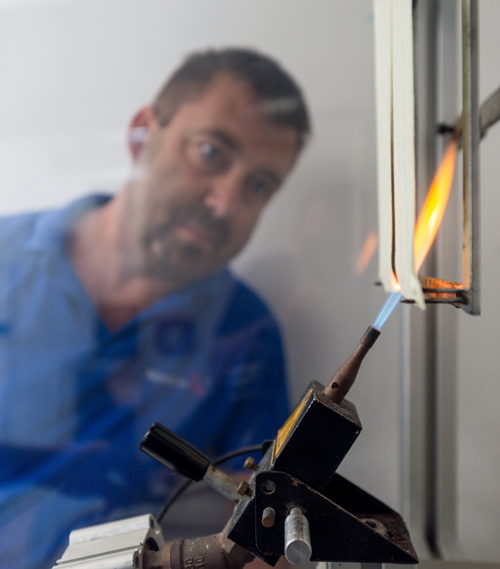Your Solution Provider for Customized Projects
Thanks to our equipment in Germany and USA, we can judge the quality of our products while following the objective to improve our products according to our customer’s needs.
Besides the test methods essential to the production process, we offer special tests optimized for specific fields of application.
The tests, that are conducted in Germany, are performed in accordance to the following norms.
Filtration
The pore size meter determines the dimensions of the filter pores in both a dry and wet state. The principle of measurement is closely based on the directives given in the norms ASTM E 1294-89 and ASTM F 316-03.
The parameters describing the material structure are as follows:
- the bubble point
- the pore size distribution
- the mean flow pore size
- the pore size (mean and median value)
We also test the filter media with the help of our filter test bank. The test equipment is important for the development and optimization of the filter media as well as for the quality assurance during the production process. The filter test bank makes it possible to carry out filter tests in accordance with various international standards. The design is based on VDI 3926-II:2004. We have the possibility to measure the following features:
- pressure drop
- overall fractional efficiency or fractional efficiency with
a specific particle size (0.3 to 20 µm) - dust retention capacity
Standards to the Protection against Heat and Flame
The textile surface is exposed to a defined flame for 10 seconds, to evaluate the propagation, the afterglow and the final state of the material after the procedure.
The test procedure is used to evaluate the material changes, after the exposure to the radiation.
Materials are ranked by calculating a heat transfer index, which is an indication of the relative protection under specified test conditions.
The TPP-test simulates typical fire conditions through the combination of convective heat and radiant heat. Therefore, a specimen is exposed to typical fire conditions: The heat source consists of 50 % convective heat and 50 % radiant heat. The heat flow adds up to 84 kW/m² (approximately 2 cal/cm²/sec.). The test determines the time and applied heat energy per unit area (TPP) on the back of the textile that would result in second degree burns on the skin.
The sweating guarded hotplate, often referred to as a ”skin model”, is designed to produce accurate, repeatable measurements of the thermal resistance and water vapor resistance (or permeability) of textiles under steady-state conditions. These measurements can be conducted separately or simultaneously whereupon different environmental conditions in form of specific combinations of temperature, relative air humidity, air velocity, and aggregate state (aerially or liquid) can be used.
Further Possible Tests according to the Following Norms:
DIN EN 20811: determine the resistance against water penetration; Hydrostatic compression test.
DIN EN ISO 9237: Textiles – determine the air permeability of textile fabric.
The penetration test: a vertical force of 150 N acts upon a blade so that the blade’s point penetrates the test material. The cut test: Tractive power acts upon a blade using a tractive device, which draws the blade over the test material. The duration of the test must be 5 ± 1 seconds. Test criteria are a possible tearing caused by the blade and its elongation.
Stab protection measurements are conducted at Norafin with the following classifications and test conditions:
- test of the stab inhibition through the knife (blade)
- class K1 (least resistance against a blade)
- impact energy: 15 Joule
- angle of incidence: 90°
- mean puncture depth: < 5 mm
- largest single puncture depth: < 10mm
Specimen with a caliber of 10 cm and a thickness up to 40 mm can be measured in a frequency range between 50 Hz – 1.6 kHz. The results deliver insight into the absorptivity and sound absorbing properties. These measurements can be conducted as an orientation before conducting a test in an optimized test room (Anechoic chamber).
We do also offer orienting tests for our products and provide a qualified test report. Contact us!
Concept samples
Concept samples are important to evaluate the producibility of a nonwoven with the customer’s predefined parameters. Mostly, we produce these samples on our pilot line before producing the new product on our spunlace or needlepunch line. For us, concept samples are considered as pre-stage of a large-scale test and therefore, a recommendation to our customer.
The production of concept samples can comprise the following points:
- Test of fibers and fiber combinations through the production of a carded felt on our test carding machine with subsequent entanglement on our production lines or on the splice rewinder. The size of the sample is about 1 m². Trials can also be conducted to obtain different attributes of nonwovens.
- Finishing of samples in A4-size through padding, coating, or printing.
- The customer can choose between different test finishing, e.g. water or oil repellent, flame retardant, stiffening, laminating, or color application.
- The verification of an order in dependence on a specific norm is possible.








